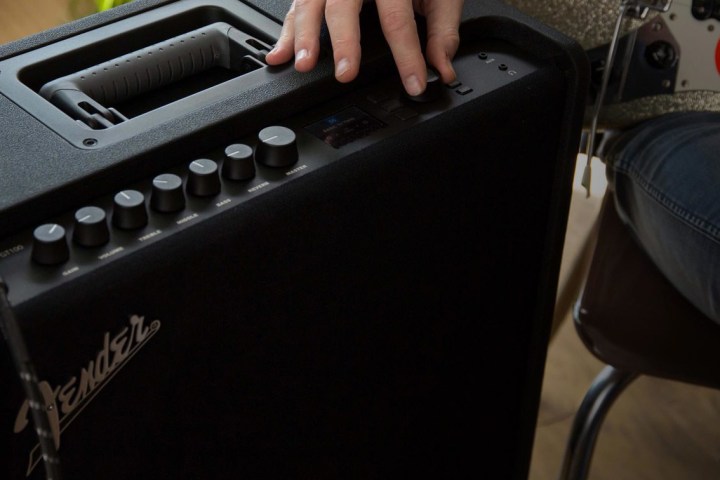In many ways, our time with Meagher helped support the idea that the Mustang GT line could set the tone for the future of instrument amplification. Whether you’re a serious professional guitarist or an axe-slinging weekend warrior, the search for the warm sounds of your dreams has historically come with a series of compromises. Each of these issues is directly tackled by Fender’s Mustang GT amps.
Even the largest Fender Mustang GT weighs about half of its tube-amp equivalent.
First, there’s the cost. The price of classic tube amps used by your favorite guitar heroes is often so exorbitant, you’ll think twice about ever letting it leave the jam space. The Mustang GT, on the other hand, ranges from a shockingly low $250 for a 40 watt, 2×6-inch driver model, to a still-affordable $600 for the 200-watt, 2×12-inch GT model the company sent our way. For comparison, a reissue of the similarly loud, 2×12-inch reissue of a ‘65 Twin Reverb will run you $1,450.
That brings us to an equally annoying fact about tube amps: They’re usually very heavy. While you may have been happy to cart around that Fender tube amp in your 20s, the older you get, the less comfortable your body gets heaving the thing in and out of the basement. The Fender GT is a digital amp that requires much less internal hardware to function; even the largest Fender Mustang GT weighs about half of its tube-amp equivalent, making it extremely easy to take with you wherever you need to go.

Then there’s the tonal variety offered by the Mustang GT. Using advanced digital modeling, a built-in display, and the Fender Tone app, the Mustang GT is the most tonally diverse amplifier in Fender history. It can not only recreate the sounds of Fender’s most acclaimed tube models — like the aforementioned ‘65 Twin Reverb — with surprising accuracy, it can also be used to apply an astonishing number of digital effects, all accessible via intuitive interfaces.
Add it all up, and Fender has made perhaps the most compelling gigging and practice amp we’ve come across, whether you’re looking to recreate classic blues tones, or to mimic the phased-out sound of Prince’s guitar on Purple Rain.
You’ll find out what we mean in our hands-on video above, which features an American Professional Stratocaster played through the Mustang GT.
If you’re looking for more instrument-related content, check out the Fender Mod Shop P-Bass hands-on video we shot late last year, or this quick review of IK Multimedia’s iLoud portable Bluetooth amp.




